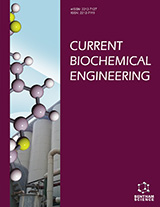Abstract
Background: Global seafood production has doubled over the last two decades with aquaculture now contributing nearly 50% of supply. Pressure to reduce or eliminate water and waste discharge from aquaculture increases with each passing year. In response to this pressure, producers have adopted increasingly sophisticated technology, expanding fish and shellfish production from 2,000 kg/ha to over 40,000 kg/ha. While water discharge has been drastically reduced, waste solids production from intensive aquaculture continues to pose a management challenge. One potential solution is to co-culture filterfeeding aquatic organisms with higher-value aquaculture species as a technique to harvest and covert excess bacterial and algal biomass into useful co-products and biofuels.
Methods: Over a period of twenty years, the author and co-workers have designed and operated catfish and marine shrimp production systems employing co-culture of tilapia (Oreochromis niloticus) and brine shrimp (Artemia) to remove, concentrate, and convert microbial solids into animal biomass and biofertilizer. Past system operations are reviewed, and additional methods and data are presented and discussed. In the case of tilapia, a technique entitled “tilapia enhanced sedimentation” is evaluated for use in converting algae into concentrated fertilizer and fish flesh. Alternatively, brine shrimp are used to harvest and convert microbial solids into a potential fish-meal replacement.
Results: Tilapia co-culture was shown to be cost-effective in controlling aquaculture system algal species and density, selectively removing cyanobacteria from culture water promoting green algal dominance, reducing off-flavor in cultured fish species. Tilapia co-culture at biomass levels from 20-25% of targeted fish carrying capacity was required to reduce algal and bacterial levels, significantly reducing oxygen demand and aeration requirements, Tilapia enhanced sedimentation was demonstrated to be effective in removing suspended algal and bacterial solids, concentrating excreted biomass into rapidly settling fecal pellets. Brine shrimp culture has been demonstrated at densities of 2,000-4,000 animals/ liter, corresponding to 4 gm/liter of dry weight animal biomass concentration. Brine shrimp are capable of conversation efficiencies as high as 50% of microbial dry weigh to brine dry shrimp weight, as opposed to < 3% conversion with tilapia. However, successful Artemia culture necessitates unique culture system design and management, requiring two-stage, multiple-batch cultures of uniformly sized cohorts to yield maximum growth and conversion efficiency. Unique pH and ammonia toxicity response of brine shrimp necessitates management protocols very different from typical aquatic animal culture. Tilapia harvested algal sludge is limited to fertilizer application, yielding a value of $0.10/kg at 98% dry weight. On the other hand, brine shrimp biomass can be used as a potential fish-meal replacement at a value of $ 1.50/kg dry weight.
Conclusion: Utilization of co-culture of filter-feeder organisms such as tilapia and brine shrimp to harvest, concentrate, and convert algal and bacterial solids into concentrated sludge or animal biomass offers potential to provide value-added products from integrated aquaculture operations as a more environmentally friendly practice.
Keywords: Aquaculture, fish and shellfish production, bacterial and algal biomass, biofuels, filter-feeder organisms, brine shrimp.
Graphical Abstract
 3
3
















